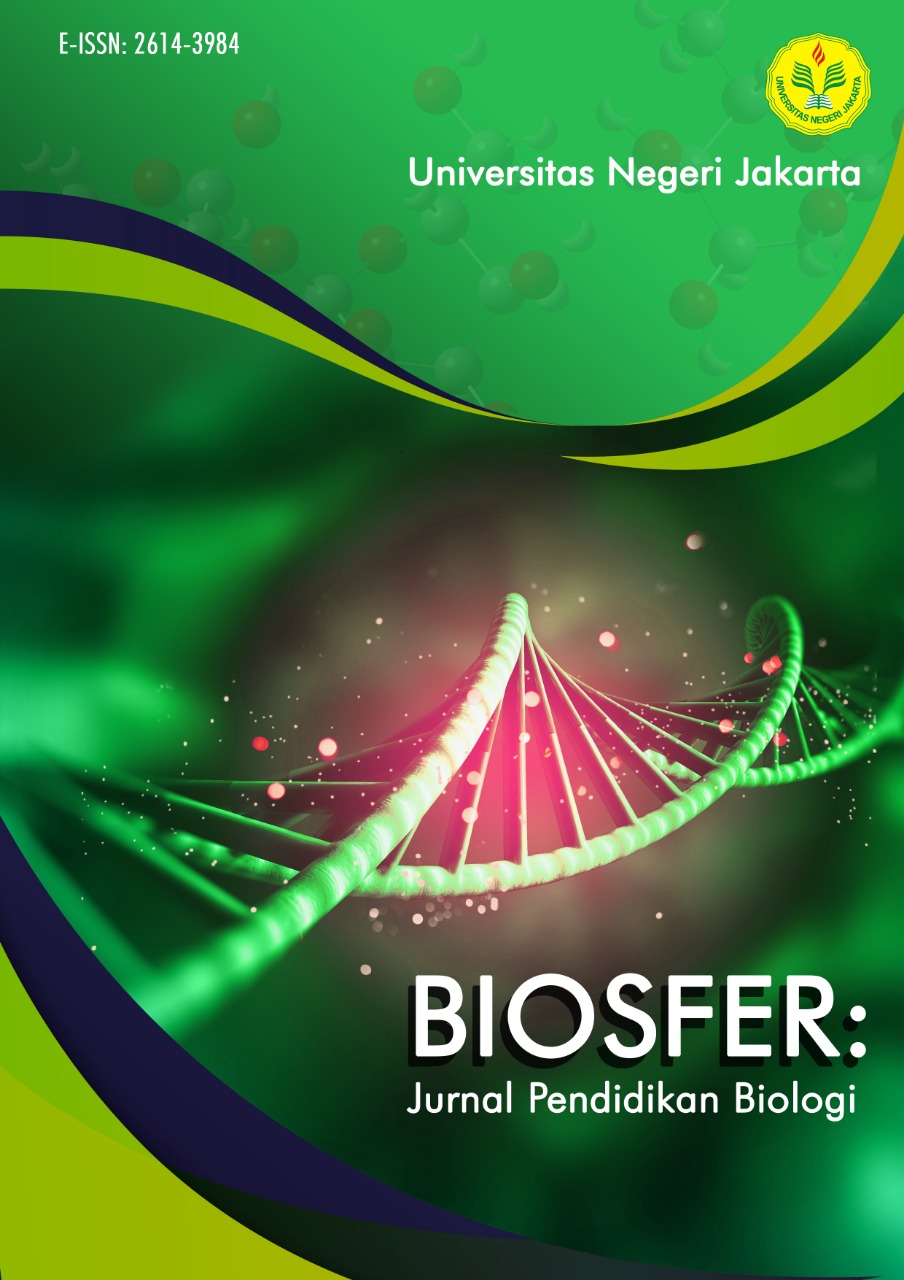The Difference Analytical Ability of Student Learning Assurance, Relevance, Interest, Assessment, Satisfaction with Student Teams-Achievement Divisions on Environmental Pollution
DOI:
https://doi.org/10.21009/biosferjpb.8-2.7Keywords:
Analytical thinking, ARIAS, STADAbstract
Analytical thinking is the ability to specify a state according to the parts that are smaller and able to understand the relationship between the factors of the other factors. Learning to develop students’ analytical thinking skills include learning model ARIAS and STAD. The purpose of this study to determine differences in students’ analytical thinking skills through learning models ARIAS with STAD on environmental pollution. This research was conducted at SMAN 31 Jakarta in May 2014. The method used is the method of quasi-experimental research design Post-test only design group. The research sample in each group are 32 students selected by simple random sampling. The analysis prerequisite test is a test for normality with the Kolmogorov-Smirnov test and test to test homogentias F. Based on the data obtained by the calculation of normal and homogeneous. Hypothesis testing using t-test with a significance level α = 0.05 shows the p-value is 0.000, it can be concluded there are differences in students’ analytical thinking skills through learning models Assurance, Relevance, Interest, Assessment, Satisfaction (ARIAS) with Student Teams-Achievement Divisions (STAD) on environmental pollution.
Additional Files
Published
How to Cite
Issue
Section
License
The Authors submitting a manuscript do so on the understanding that if accepted for publication, copyright of the article shall be assigned to Biosfer: Jurnal Pendidikan Biologi (Biosferjpb) and Departement of Biology Education, Universitas Negeri Jakarta as publisher of the journal.



